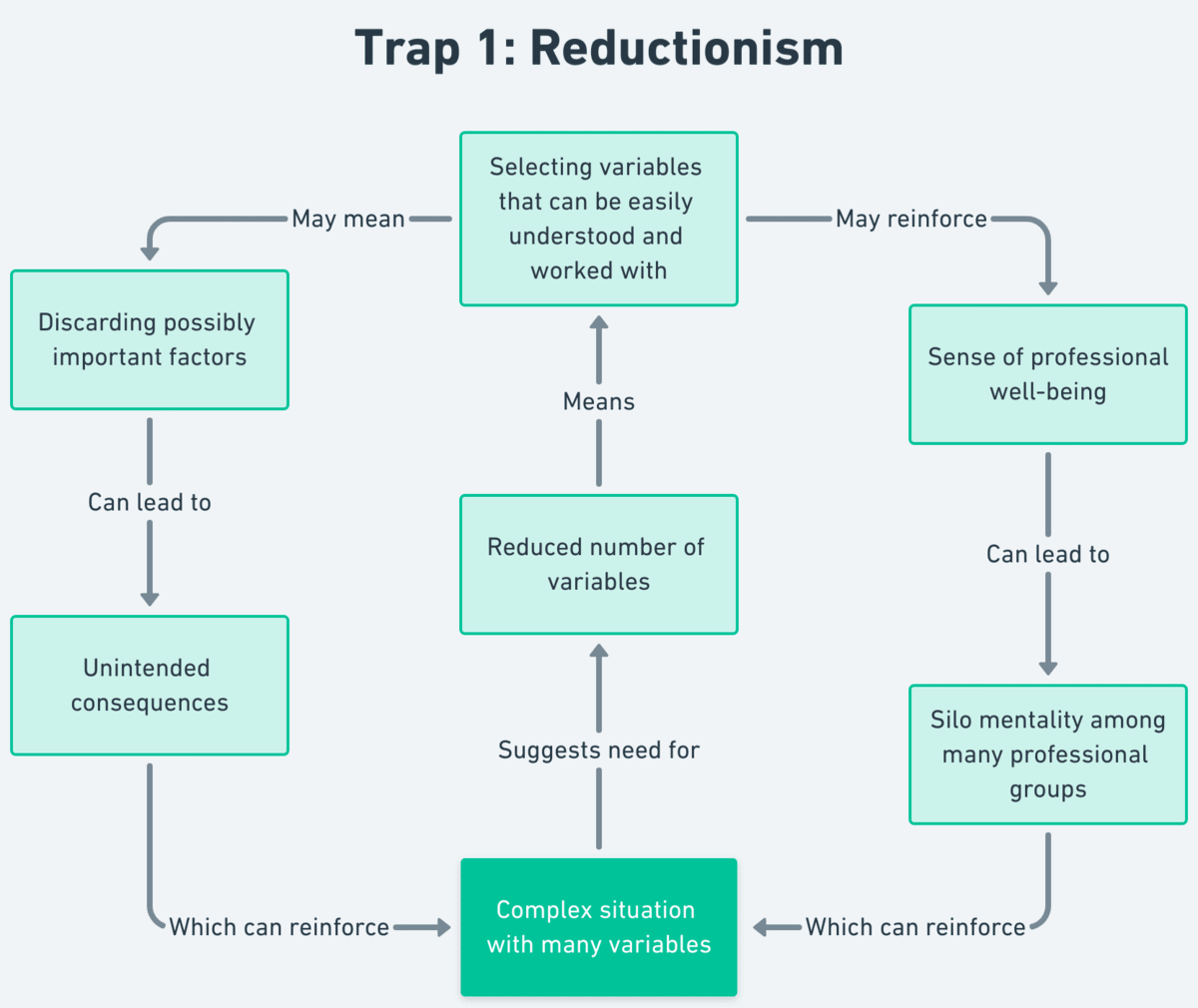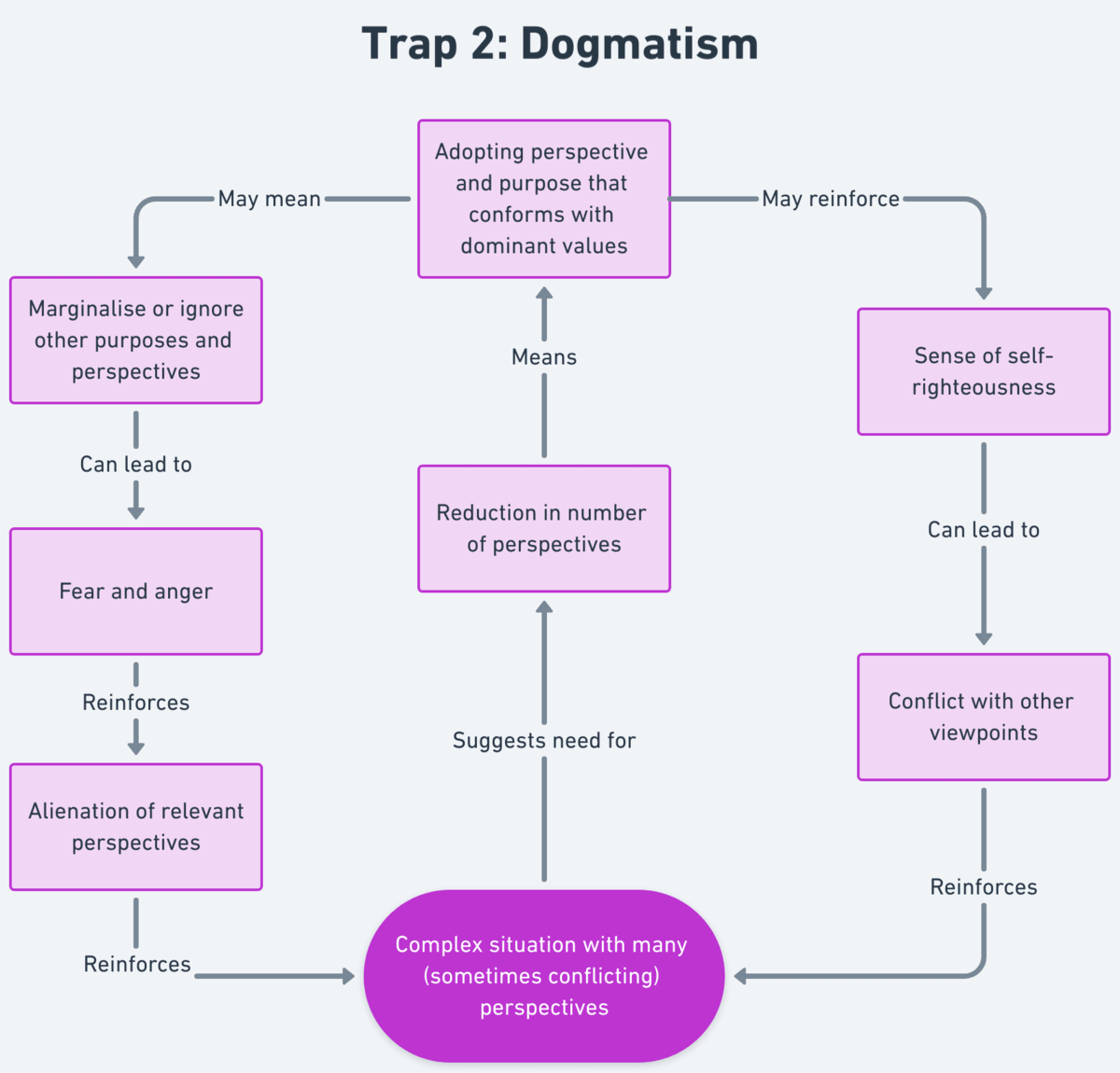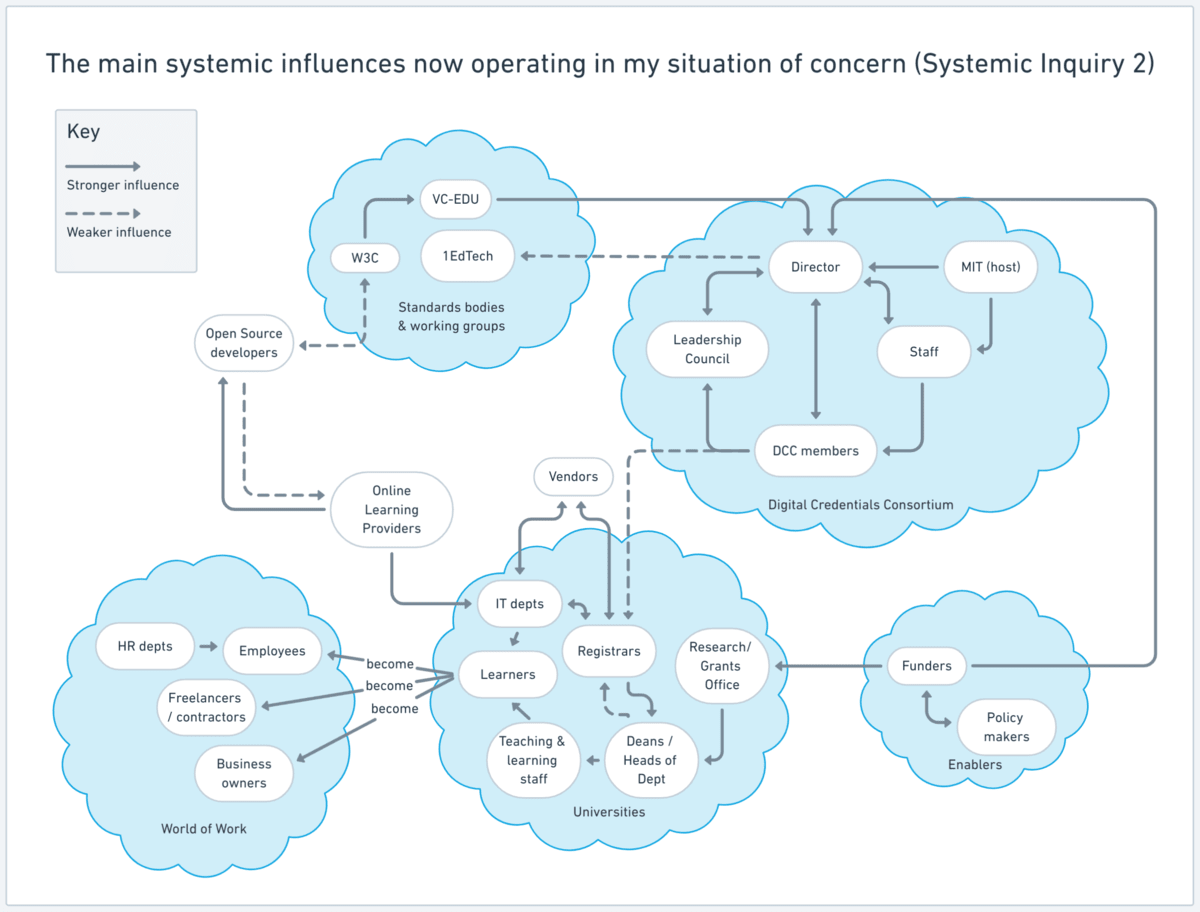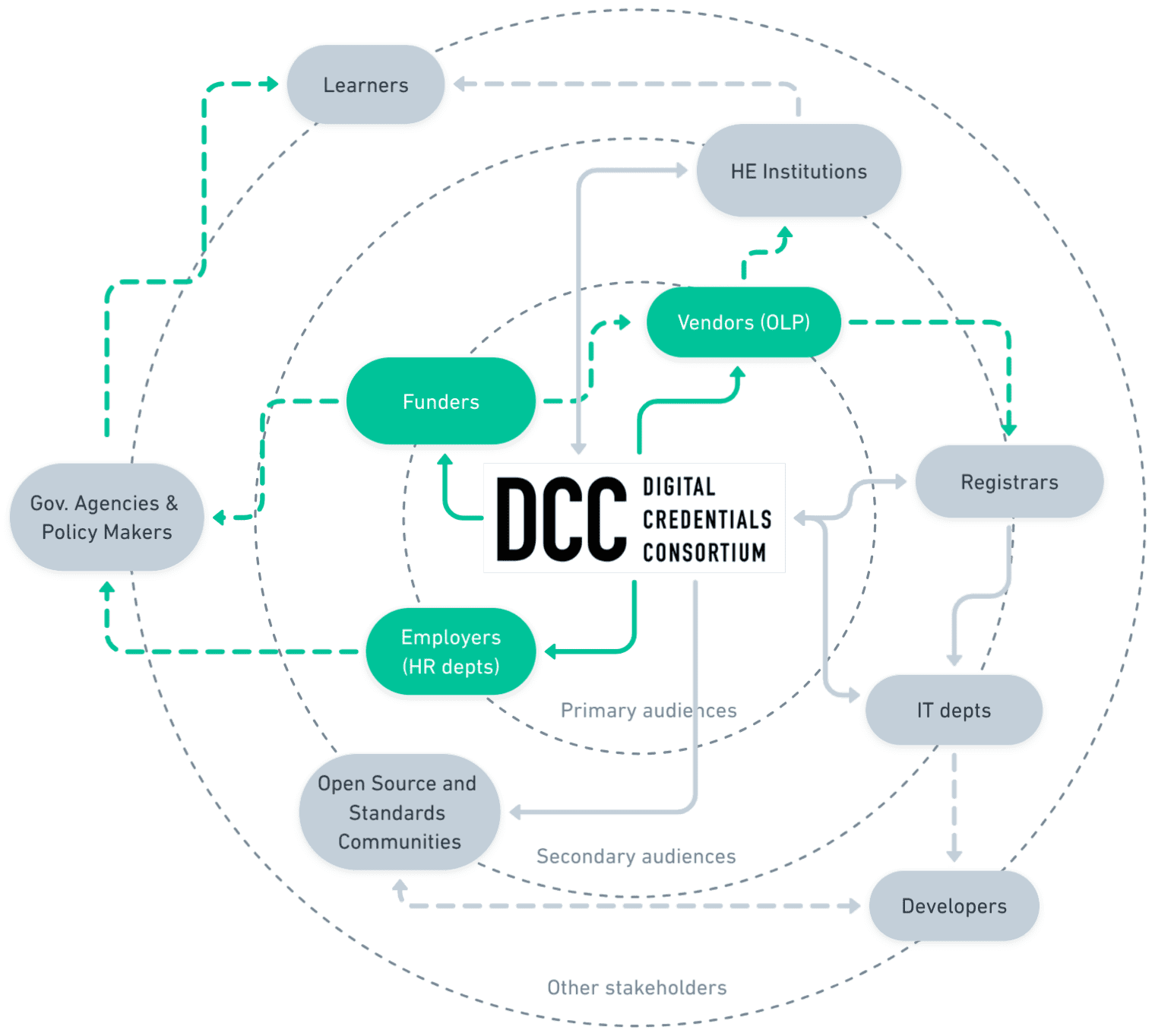TB871: Avoiding traps in conventional thinking
Note: this is a post reflecting on one of the modules of my MSc in Systems Thinking in Practice. You can see all of the related posts in this category.
There are some really useful spray diagrams in the module materials. However, they all look very similar, with blue boxes and lines. I rely quite a lot on colour to help remember and differentiate things, so I’ve recreated them in Whimsical to help with that.
I’ve listed the three traps to conventional thinking below, along with systems approaches which were designed to counter these tendencies. The five systems approaches mentioned are described in a previous post.

[Trap 1] is a concern about having a limited understanding of a situation because of silo thinking or narrow-mindedness. The two approaches that have traditionally addressed this are System Dynamics (SD) and the Viable System Model (VSM).
The Open University (2020), my emphasis/reformatting

[Trap 2] is a concern about the restrictive practice of ‘engaging’ through ignoring other perspectives of the situation. The two approaches that have traditionally addressed this issue are Strategic Options Development and Analysis (SODA) and Soft Systems Methodology (SSM).
The Open University (2020), my emphasis/reformatting

[Trap 3] is a concern about avoiding responsibility for boundary judgements often made in situations without awareness (e.g. focusing on road transport rather than all means of transport) by making them explicit with systems thinking in practice. The approach that has addressed this issue is Critical Systems Heuristics (CSH).
The Open University (2020), my emphasis/reformatting
References
- The Open University (2020) ‘1.3.2 Systems practice for avoiding and springing traps’, TB872 Block 1 Systems and Strategy [Online]. Available at https://learn2.open.ac.uk/mod/oucontent/view.php?id=2261477§ion=4.2 (Accessed 11 May 2024).



